A guide to identifying banana fruit fungal issues.
Bananas are susceptible to various fungal diseases that can affect their fruit quality. Correctly identifying these fungal issues in banana fruit is crucial to understanding how to manage and prevent further damage. This guide explores some of the most common fungal problems that affect banana fruit.
If your issue isn’t listed here or you are having problems identifying what is causing damage to your crop check out the Better Banana’s problem solver section here.
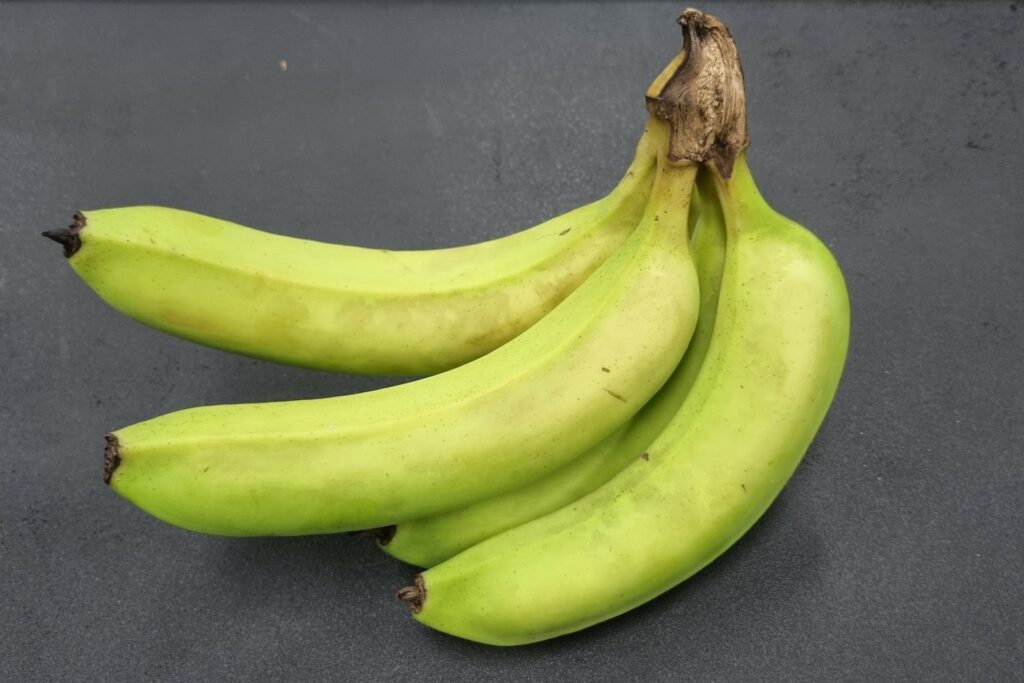
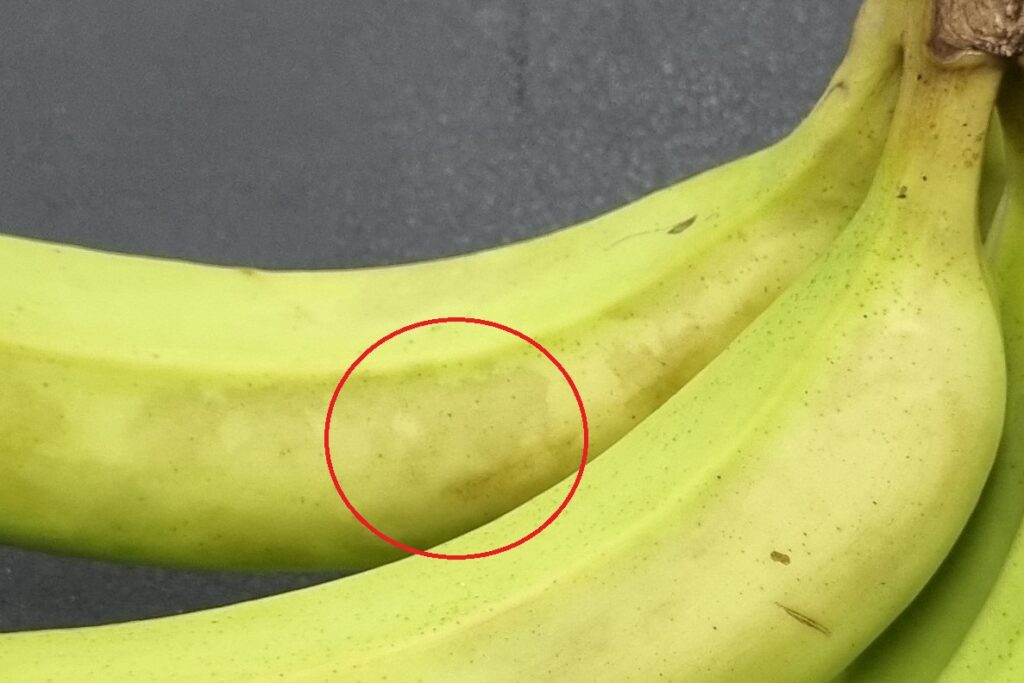
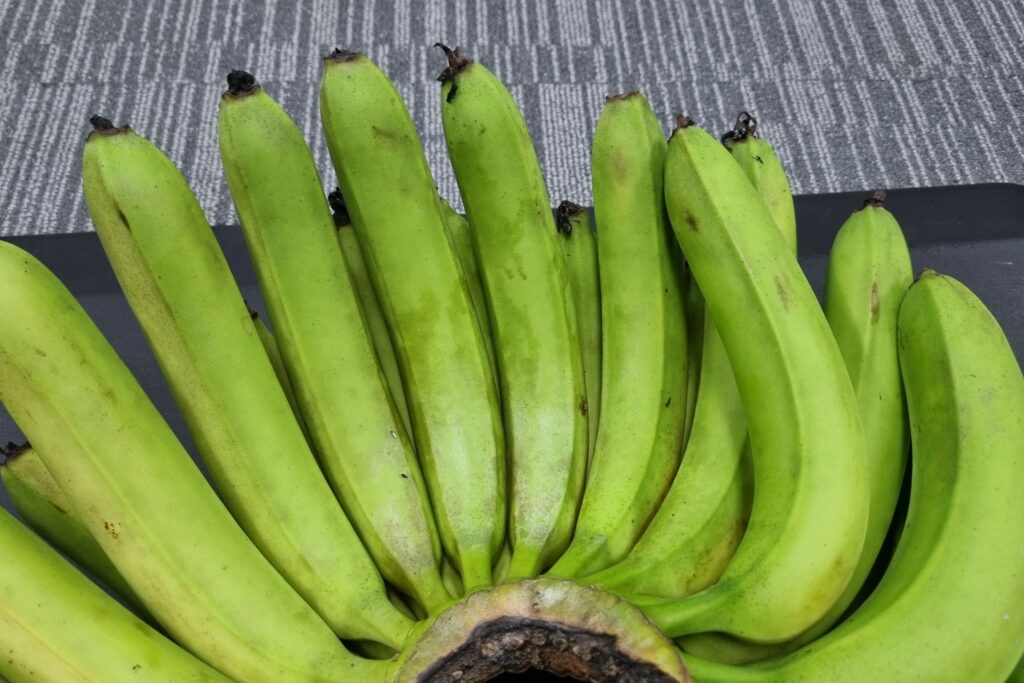
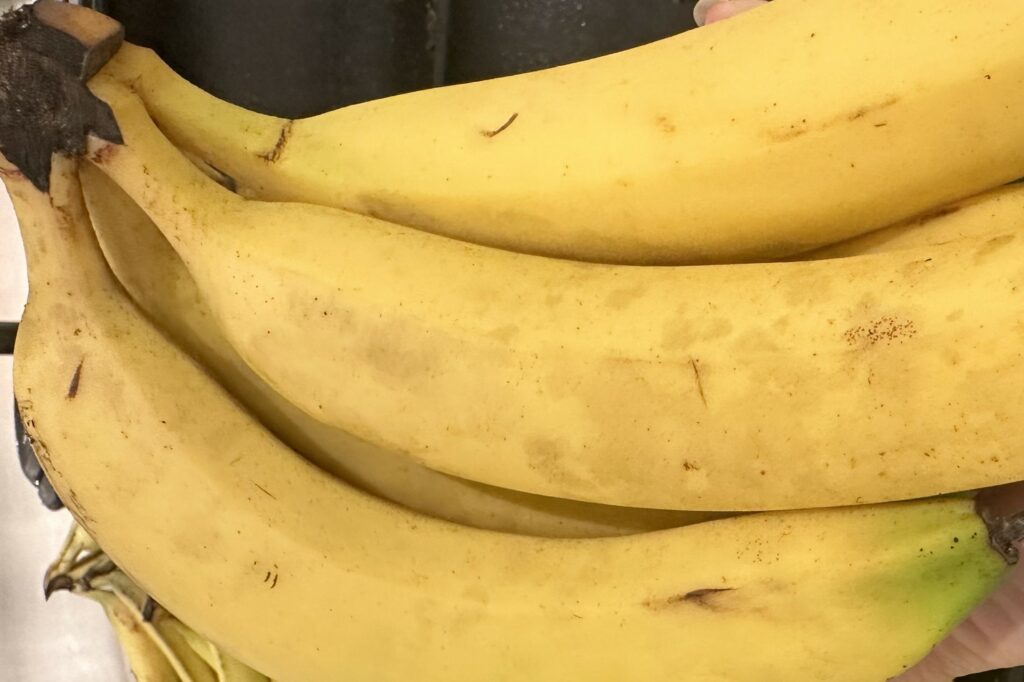
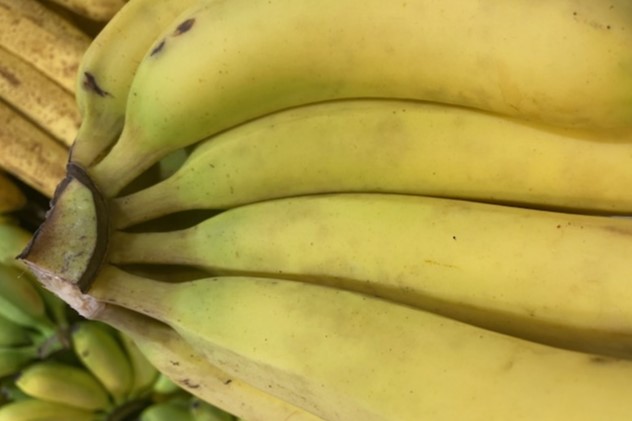
Sooty blotch
- Multiple fungal organisms are associated with the symptoms.
- Presents as water-soaked shadowing.
- Damages skin surface and can’t be removed by rubbing.
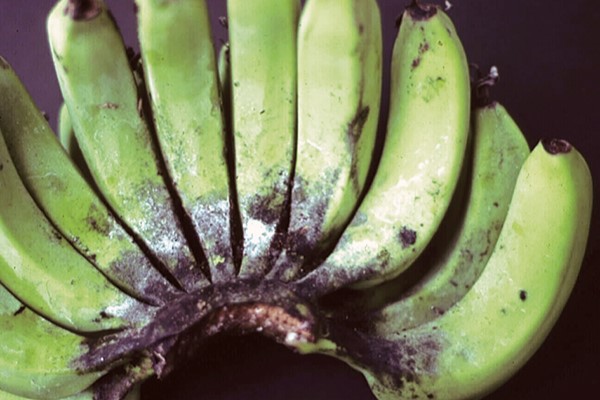
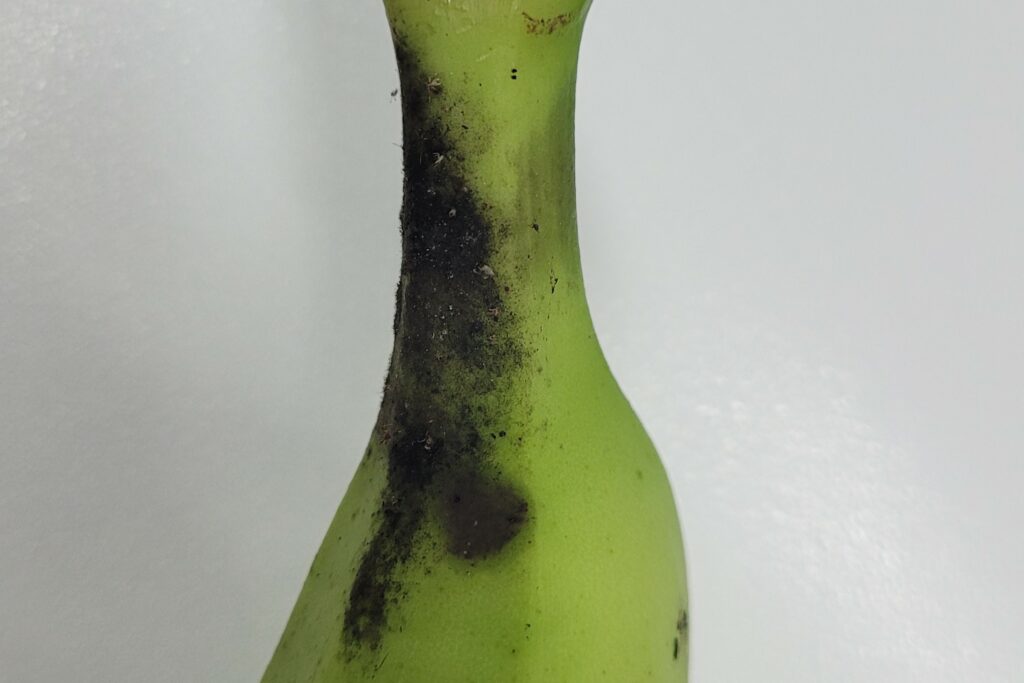
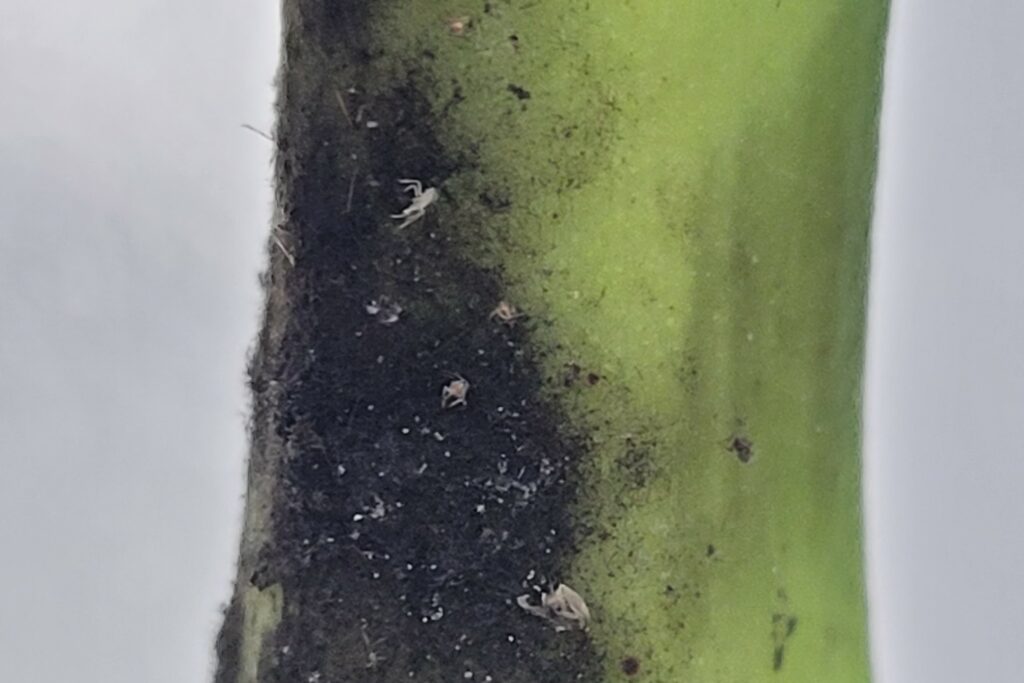
Sooty mould
- Caused by the combination of sap-feeding insects (banana aphids and mealybugs) and fungi, namely the genus Cladosporium.
- The fungus grows on the honeydew secreted by aphids or mealybugs and the fungal infection is secondary.
- Black powdery growth occurs in dark layered sheets which can be peeled away or removed by rubbing (but the stain remains).
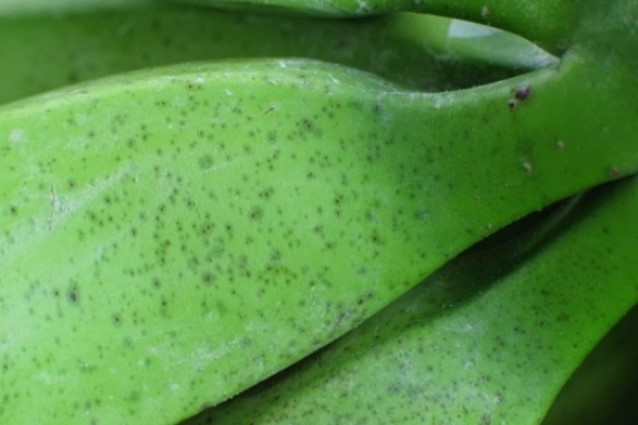
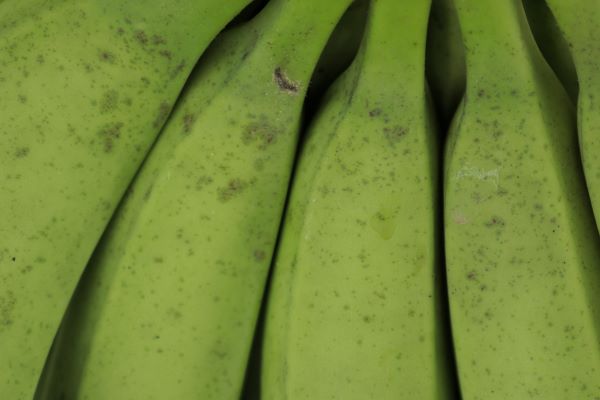
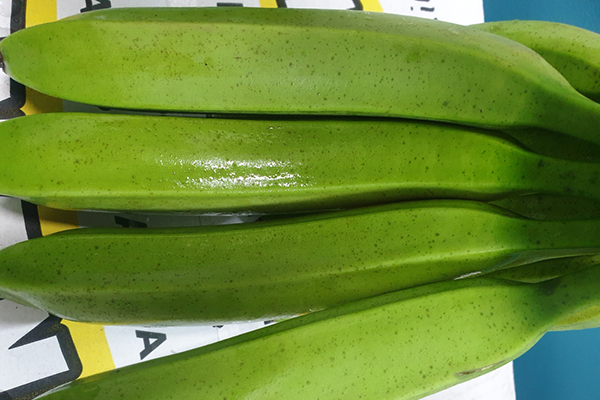
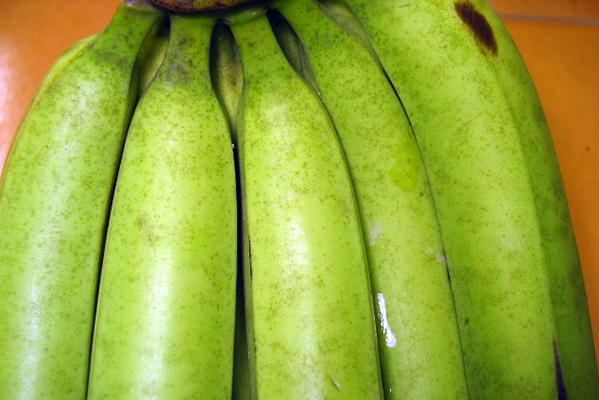
Fruit speckle
- Caused by multiple species of fungi including Colletotrichum musae, Fusarium oxysporum and Fusarium semitectum.
- Occurs first on fruit neck.
- Smooth reddish brown to black spots (0.5-1mm) with water-soaked margins.
- Previously known as ‘swamp spot’, ‘salt and pepper spot’ and ‘Deightoniella spot’.
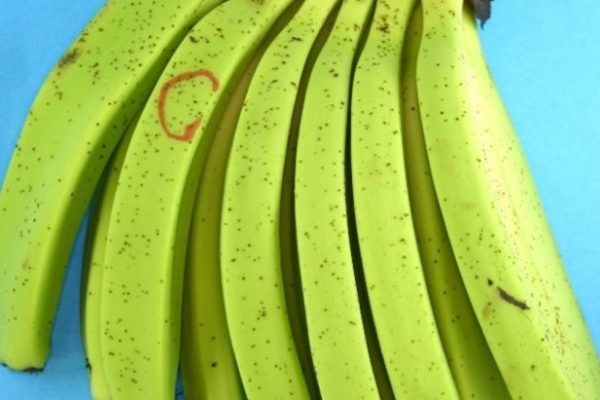
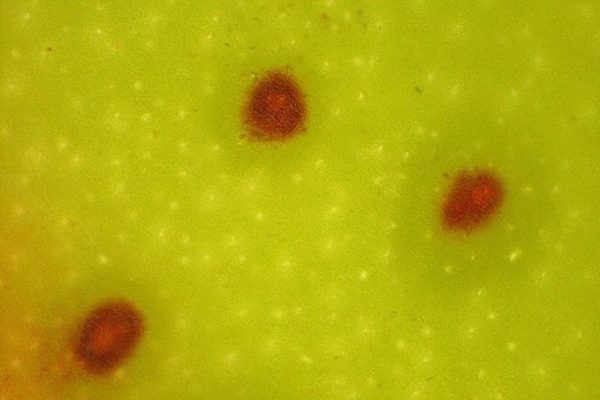
Deightoniella spot
- Caused by Deightoniella torulosa
- Spots are typically larger than fruit speckle (2-4mm) and sunken on green fruit.
- Less commonly detected in FNQ.
This information has been developed as part of the National Banana Development and Extension Program (BA19004) which is funded by Hort Innovation, using the banana industry research and development levies and contributions from the Australian Government. Hort Innovation is the grower-owned, not-for-profit research and development corporation for Australian horticulture. The Queensland Government has also co-funded the project through the Department of Agriculture and Fisheries.


